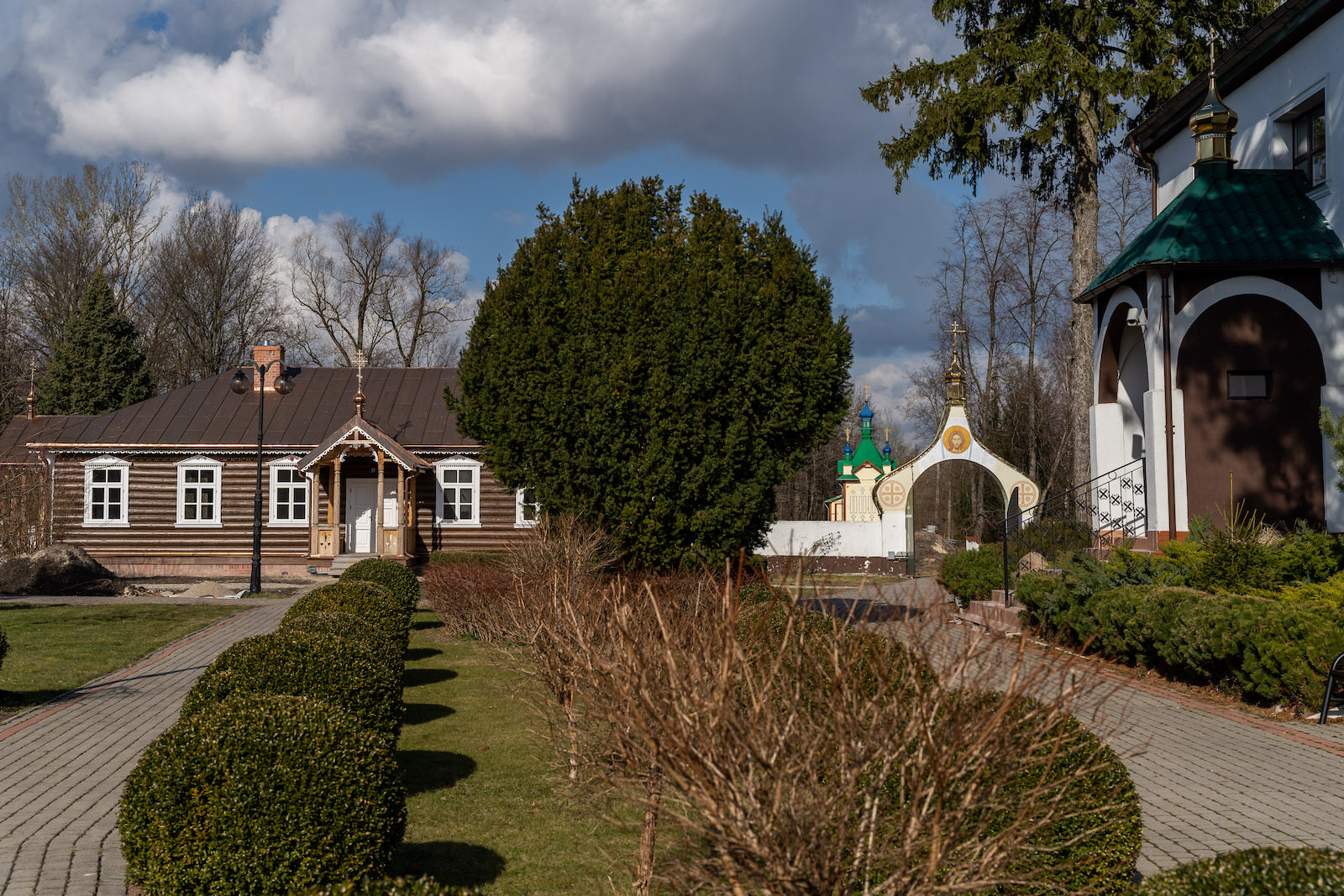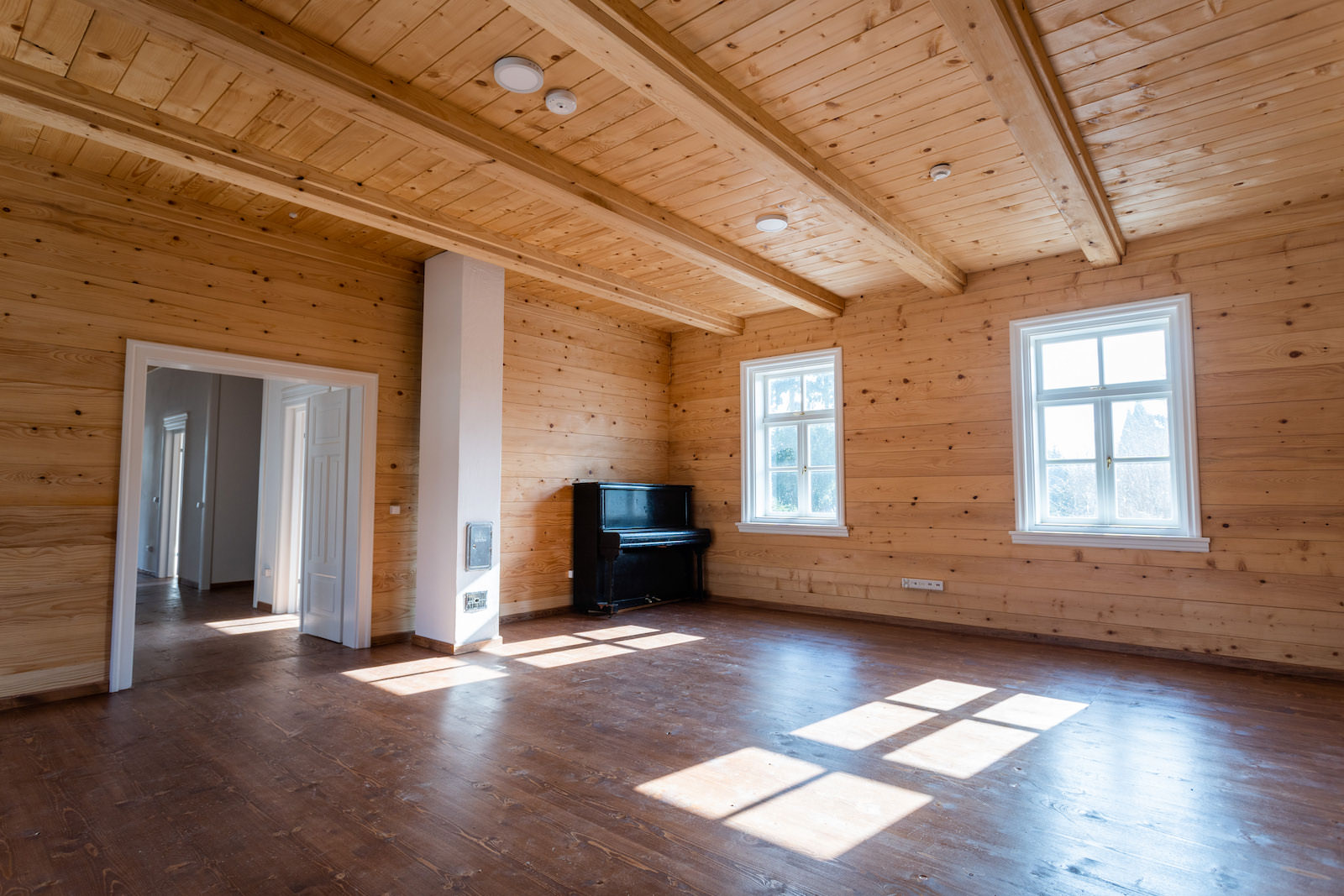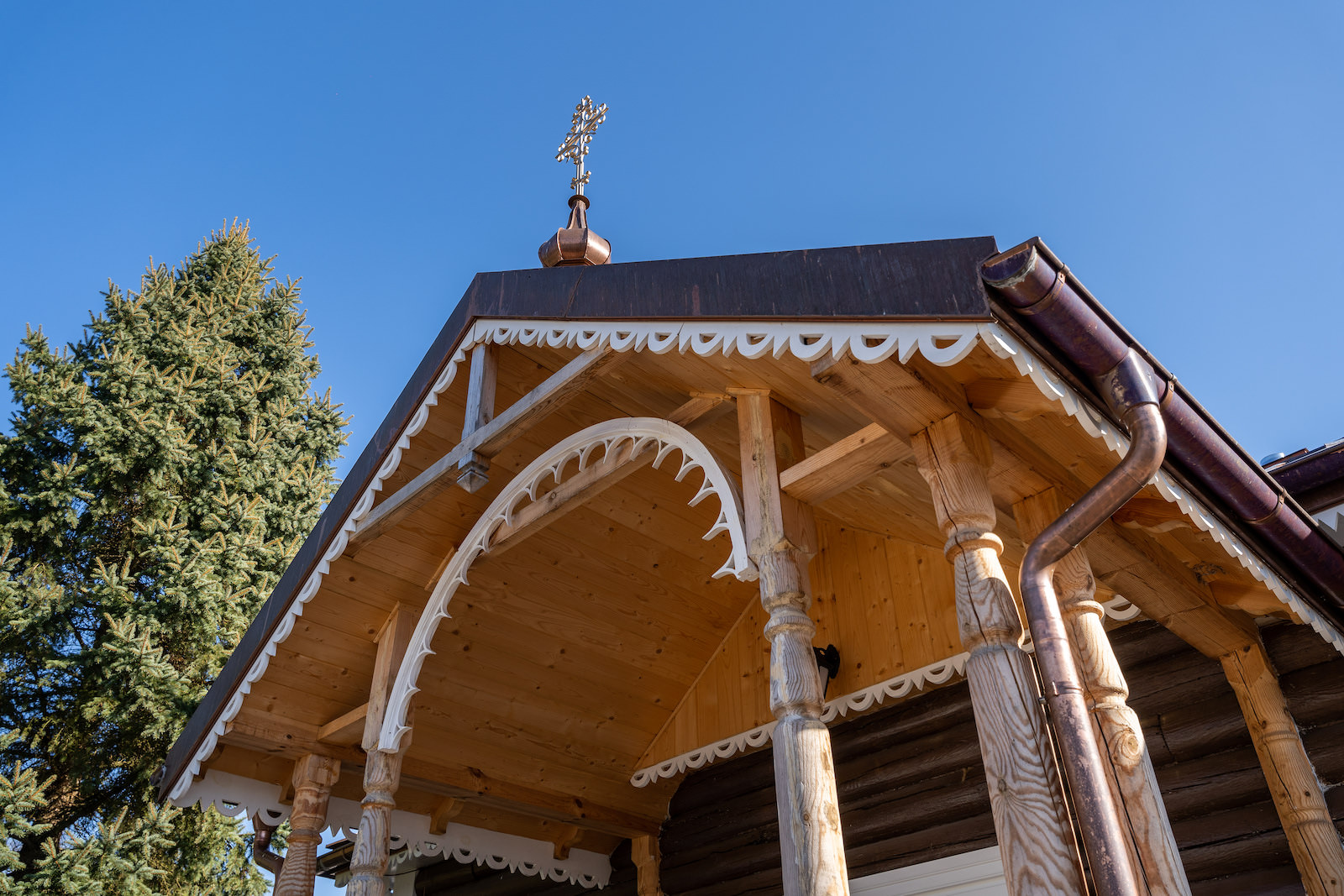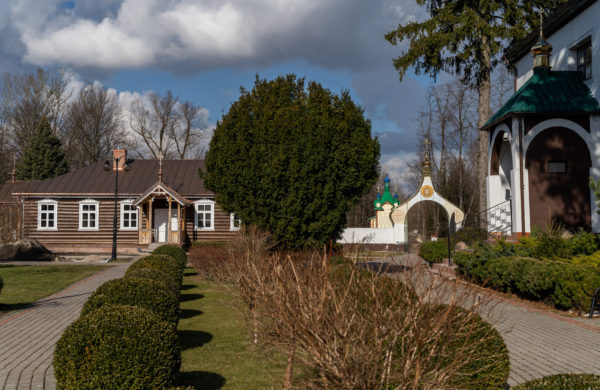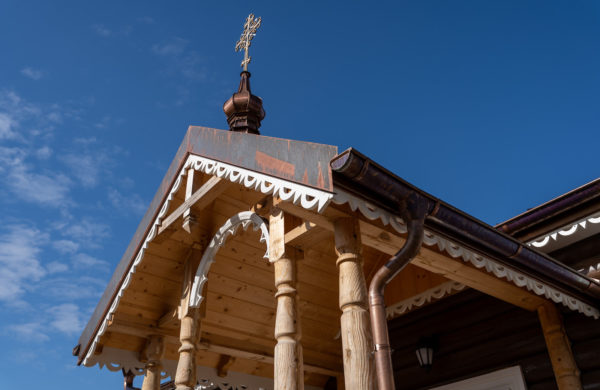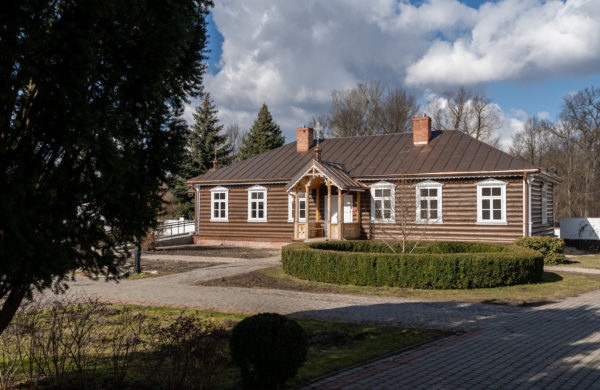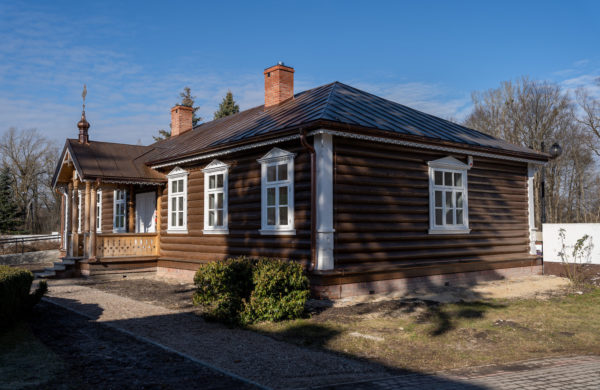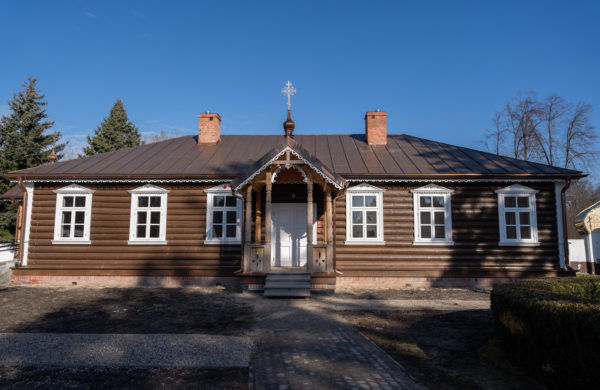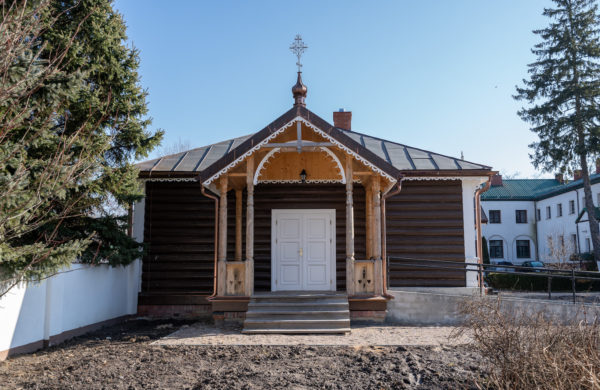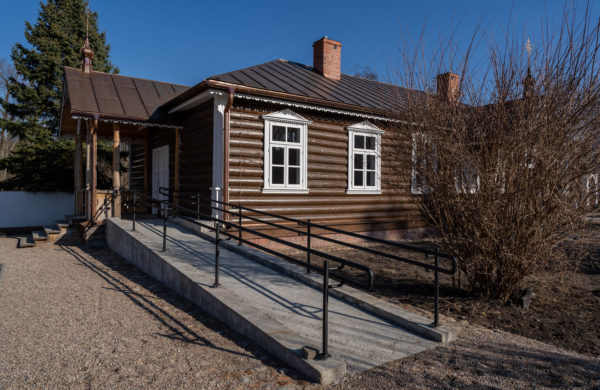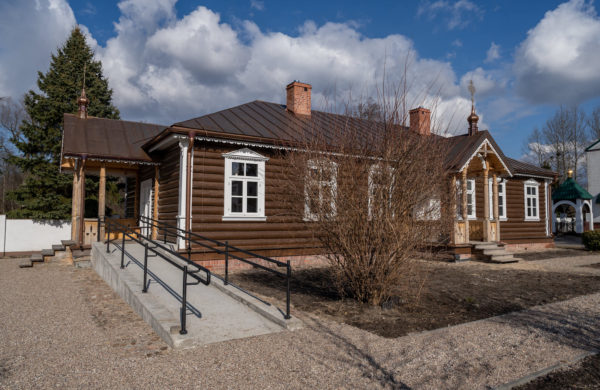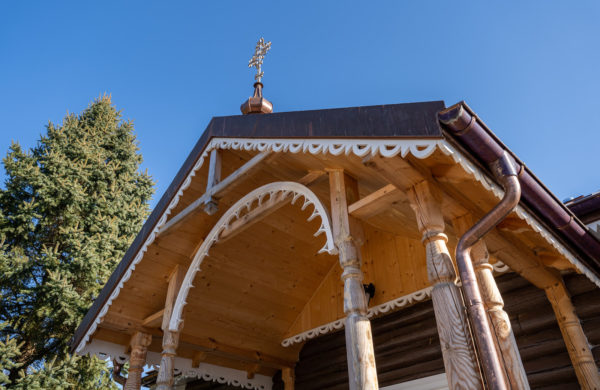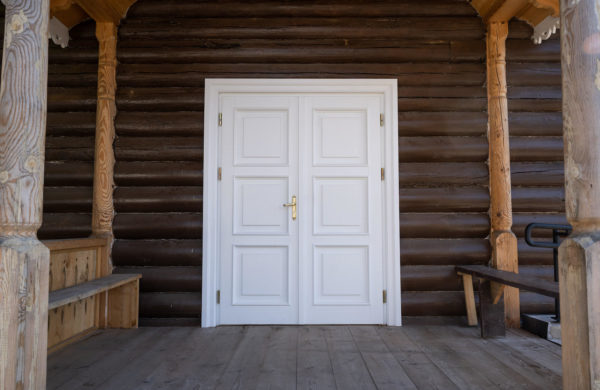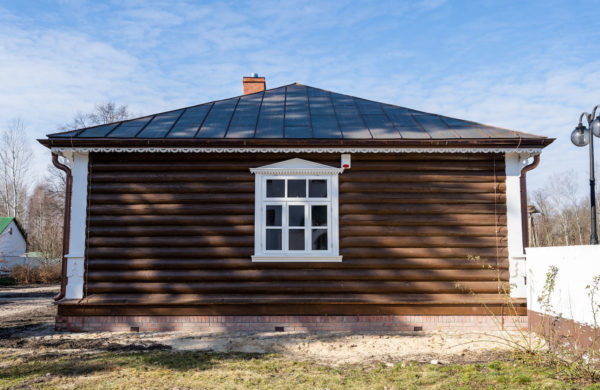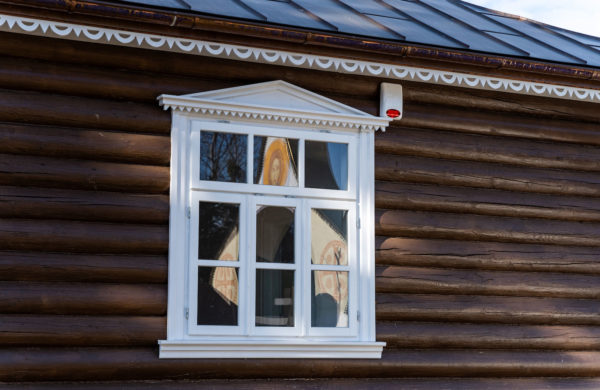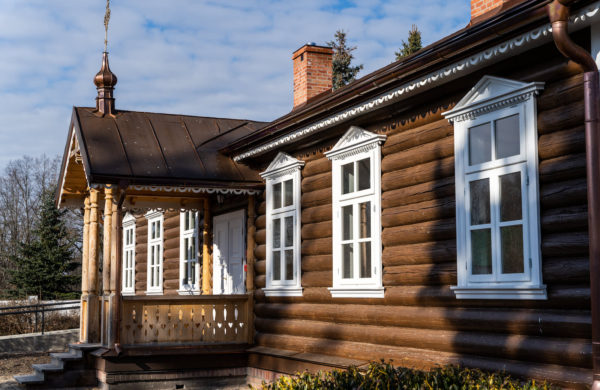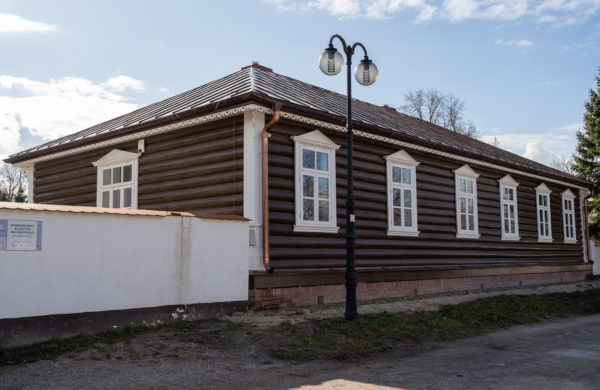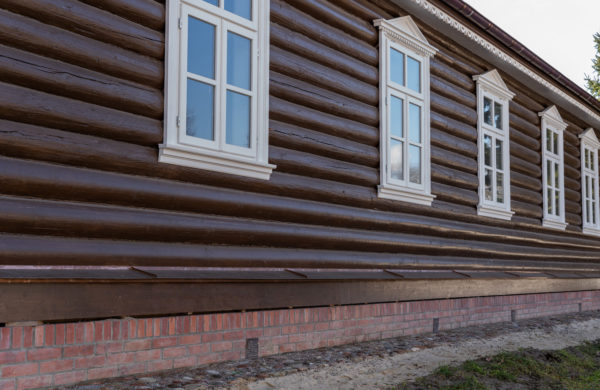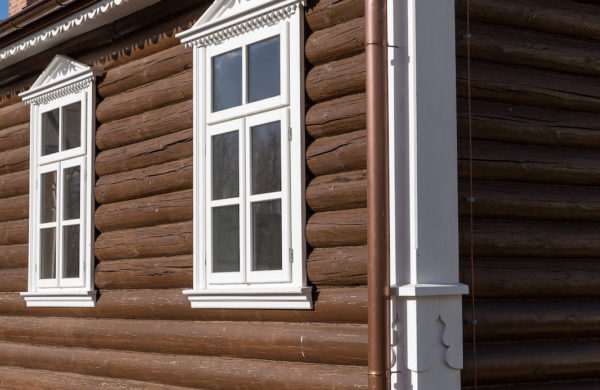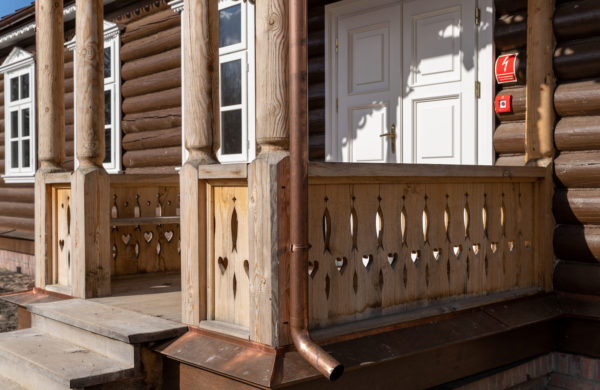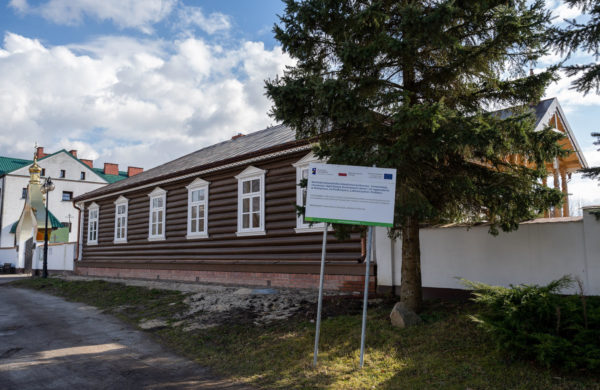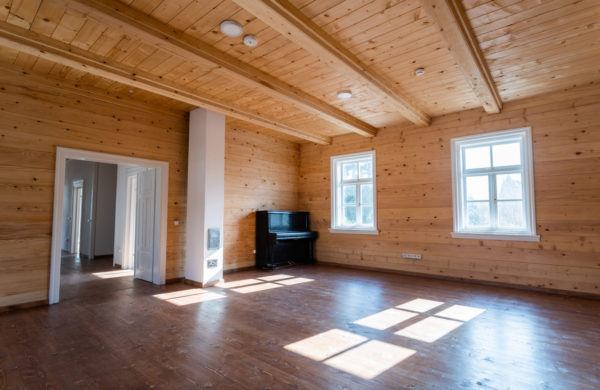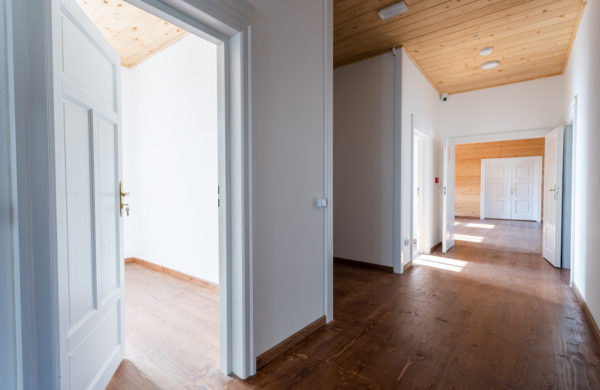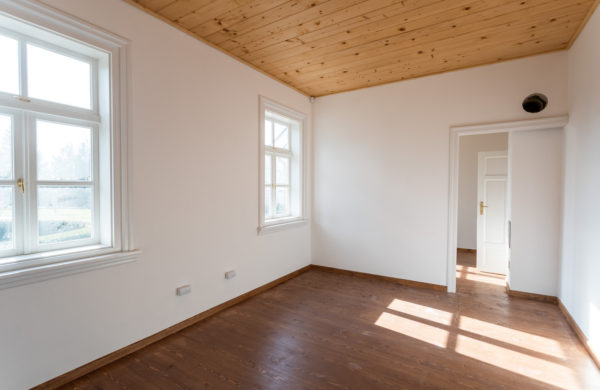Pilgrims' house
Location
The Stauropigial Monastery of St. Onuphrius reports directly to the Metropolitan of the PAOC. It is located on the border river Bug, about six kilometers from Slawatycze, a border crossing with Belarus.
History
The pilgrims’ house was built at the beginning of the twentieth century, when the ihumen of the monastery was Archimandrite Joseph, later a saint of the Orthodox Church, murdered by the Bolsheviks in 1937.
Wodden
The wooden house of pilgrims was placed on a stone foundation and covered with a tin roof. Stylistically, it refers to the architecture of the monastery buildings that existed here until the 30s of the nineteenth century.
The Monastery of St. Onuphrius the Great in Jableczna as the only Orthodox center in Podlasie resisted the aggressive attempts of the Union of Brest in 1596 and continued to stand by Orthodoxy.
Virtual tour
We have prepared some practical multimedia materials, which we hope will bring closer to these beautiful historic Polish Orthodox churches. Watching an introductory video with comments from the guide and spiritual guardian of the temple, decorated with moody Church chants, you can emphasize with its atmosphere. Going on a virtual tour, which includes 360 panoramic photos, you can quite imagine yourself inside the temple. For active tourists we have prepared a proposal for a cycling route. We invite you to a virtual tour of the orthodox church, and in the future to visit it in person.
Introduction
Monastery of St. Onuphrius the Great in Jabłeczna is a special place for Orthodoxy in Poland.
Despite many historical storms in its nearly 600-year history, it has always remained faithful to the holy faith of its ancestors.
Many contemporary hierarchs of the Orthodox Church in Poland were associated with the monastery, as well as several saints.
Miraculous icons
From the very beginning, miraculous icons have been staying in the monastery.
Icon of Saint Onuphrius the Great
It is an icon that probably in the sixteenth century flowed to this place along the Bug River. The last time the icon was preserved was 150 years ago. At that time, a silver fitting appeared on it.
The image of the Saint itself was then cut out of the destroyed wood and inserted into a new board, which as the base of the icon has survived to this day.
Jableczna icon of the Theotokos
It comes from the period of the establishment of the monastery.
Around the image of the Theotokos, we see the prophets of the Old Testament holding the texts of the prophecies about the Savior. Hence the second name of this icon – the Sign.
History of the Monastery
According to a local legend to the fishermen by the river, God appeared to Saint Onufry, who said that: “In this place it will praise my name.” Saint Onufry is the son of a Fourth-century Persian ruler and later a great Egyptian anachoreta, hermit and saint of the Orthodox Church.
After some time, the icon of Saint Onuphrius came to this place – an icon that is in the monastery to this day. The icon was placed under a local oak.
The most authoritative document confirming the existence of the monastery of St. Onuphrius in Jableczna is the Evangelion donated by the Brest burghers in 1498.
The intensive development of the monastery was inhibited by the signing in 1596 of the ecclesiastical union in nearby Brest.
For the Orthodox, the Union of Brest meant repressions, problems, and de facto the banning of the Orthodox Church in the Territory of the Polish-Lithuanian Commonwealth.
As a result of the Brest Union , the Orthodox Church was a hierarchy without believers and believers without a hierarchy that adopted the provisions of the Union.
The Brest Union 1596
The Brest Union in 1596, on the basis of which the so-called Uniate church was founded, became one of the most tragic events in the Kingdom of Poland.
In the unanimous opinion of historians, especially Professor Antoni Mironowicz, The Union of Brest became the source of all conflicts on the historical, national and spiritual backgrounds.
As a result of these conflicts, the Polish state weakened and two centuries later this situation led to the loss of independence by our Motherland.
In the following years, despite the enormous pressure exerted on the faithful and mystical centers, the monastery of St. Onuphrius in Jableczna was the only one to remain faithful to Holy Orthodoxy. However, deprived of the support of his founders, he was in an increasingly worse financial situation.
After the third partition, the Polish Podlasie together with the monastery was in the Austrian partition, and from 1815 in the Kingdom of Poland.
The situation of the monastery began to improve only in the thirties of the nineteenth century. This was due to Bishop Innocent, who visited the monastery in 1833 and also drew up a precise plan for its reconstruction and restoration. Thanks to the support of the ruler, as well as the involvement of the ihumen of the Ioanitius, wooden buildings, which have not been renovated for over 200 years, have already been replaced by brick ones.
In 1840, the third church in the history of the monastery of St. Onuphrius the Great was consecrated, along with a bell tower, which are here to this day. A new two-storey building was also erected, in which monks live to this day, and the whole was surrounded by a wall.
Another important event for the Jableczna community took place in 1884. It was then that the indefatigable Archimandrite Narcissus changed the course of the Bug River, thus moving its main stream away from the monastery buildings and saving it from infamous destruction. As a result of these actions, the monastery found itself on the left side of a dangerous river, which was crucial for its further fate.
In 1889, a school of psalmists and church conductors was opened at the monastery, and in the following years a school for children, a point of free medical advice, as well as a canteen for the poor.
The real renaissance of the monastery in Jableczna falls on the beginning of the twentieth century. At that time, the community consisted of several dozen brothers, and the superiors were successively Archimandrite Joseph, and hieromonk Seraphim, later the Holy martyrs of the Orthodox Church, murdered in 1937. At that time, a general renovation of the main temple of the monastery was carried out, and the side altars that were previously in it, were moved to newly built chapels:
- opposite the entrance gate – dedicated to the Dormition of the Theotokos,
- as well as by the river itself next to it – under the invocation of the Holy Spirit.
At that time, on the White Lake, located 5 kilometers from the monastery, a skit of Saints Sergius and Herman Walaamski was created.
In 1915, most of the brothers of the monastery, unfortunately went to the refuge. They took with them the most precious things – two miraculous icons: St. Onuphrius the Great, as well as the Theotokos of Jableczna. Unfortunately, only a few brothers remained in the place, thanks to whom the prayer in this holy place was not extinguished.
Brother Leontius of Tarnogród- later a saint of the Orthodox Church – also went to the feast irretrievably.
The monks returned to the monastery in 1919, already reborn Polish, becoming in a new reality. This is another difficult period in the history of the monastery. Contrary to historical facts, Orthodoxy was perceived by the Polish authorities as a remnant of the congregations. At that time, unsuccessful attempts were also made to completely liquidate the monastery. Most of the land was taken away, and the monastery building was transformed into an orphanage. However, the monastery did not collapse and in 1934 it was even possible to reactivate the school of psalmists and church conductors, which survived until 1939.
During the Second World War, the monastery was in the General Government. German soldiers often made raids and searches.
On the night of August 9-10, 1942, the Nazis set fire to the monastery. Miraculously, the main temple survived. One of the monks, wanting to alarm the nearby population, began to ring bells. The Germans pulled him from the bell tower and tortured him to death. In 2003, the monk Ignacy was canonized and entered the Council of the Holy Martyrs of the Chełm and Podlasie Lands. His relics are today in the main church of St. Onuphrius.
In 1944, almost half a million Orthodox from these areas were resettled to the Soviet Union. Three years later, after the end of the war, another cataclysm falls on a few autochthons – the tragic “Vistula” Action, and subsequent resettlements of the Orthodox to the so-called Recovered lands The number of believers in the parish at Monaster decreased from over 1500 people to only 80.
As part of nationalization, the monastery was deprived of its lands, inventory, as well as part of the buildings, thus depriving it of a material base for further existence.
In the mid-fifties, the situation of the monastery began to improve slightly with the return of the Orthodox population, displaced to the regained lands. At that time, the two greatest saints also returned to the monastery: the icon of St. Onuphrius the Great, as well as the Jableczna icon of the Theotokos.
The revival of the monastery took place in the seventies of the twentieth century, when its superior was Archimandrite Sawa – the current metropolitan of Warsaw and the entire Polish.
General renovations were carried out at that time, and the number of brothers also increased. In 1974, the Orthodox Seminary was moved to Jableczna, which educated future priests.
The governors of the monastery in Jabłeczna were also other contemporary hierarchs of the Orthodox Church in Poland:
the late Archbishop Miron, Archbishop Abel, Bishop Varsonofius, Archbishop Paisius, Archbishop Georgi, and Bishop Athanasius.
PILGRIMS’ HOUSE
The house for pilgrims, which still stands today, was built at the beginning of the twentieth century. At that time, the ihumen of the monastery was Archimandrite Joseph, later a saint of the Orthodox Church murdered by the Bolshevik authorities in 1937.
The house for pilgrims was placed on a stone foundation and covered with a tin roof. Stylistically, it refers to the original architecture of the monastery buildings, which existed here until the thirties of the nineteenth century, when brick buildings were erected in their place. Since then, the building has undergone numerous renovations.
In 2022, thanks to funds from the European Union, the general renovation of this historic building was completed.
Its former splendor was restored, and a large exhibition and lecture hall was added next to the rooms for pilgrims.
Virtual tour
Cycling route
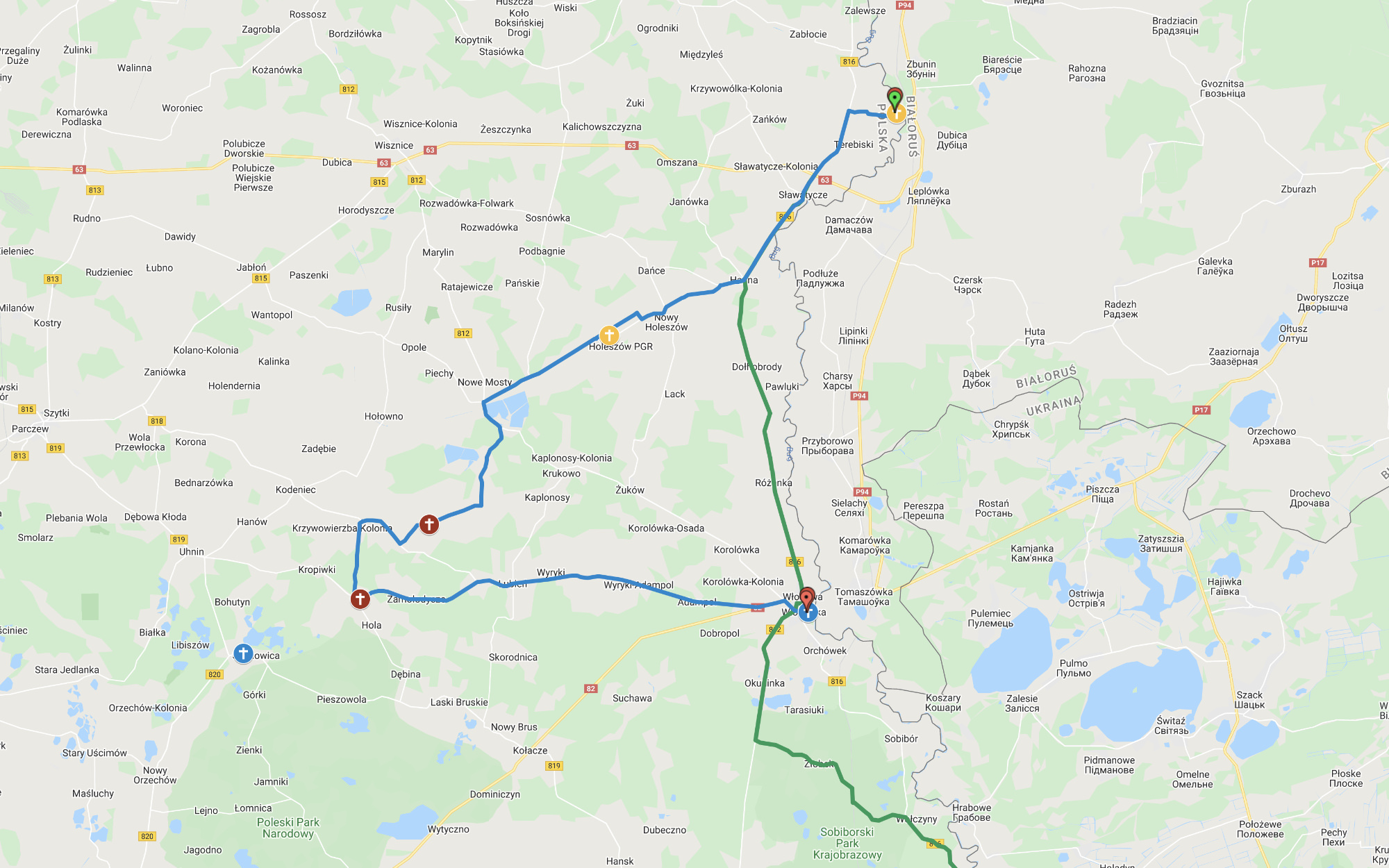
Here is a proposal for a cycling route for active tourists.
To use it, download the file to your computer by clicking the button on the left, unzip it, load the file .gpx to any GPS device for navigation … and off you go. We wish you a successful and fruitful journey.

